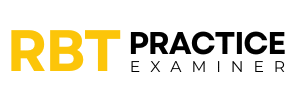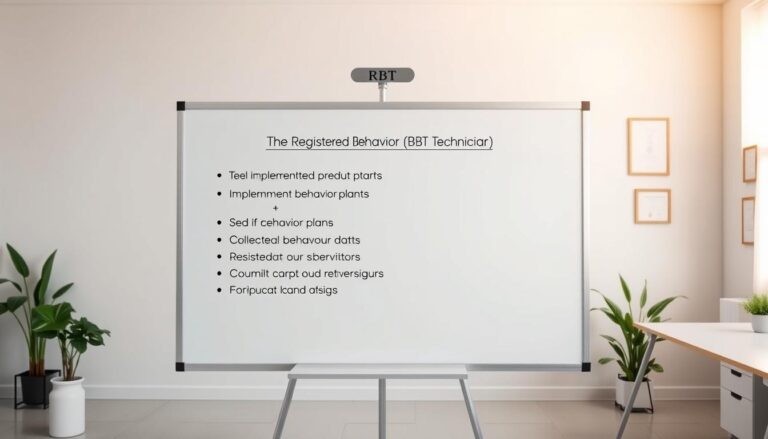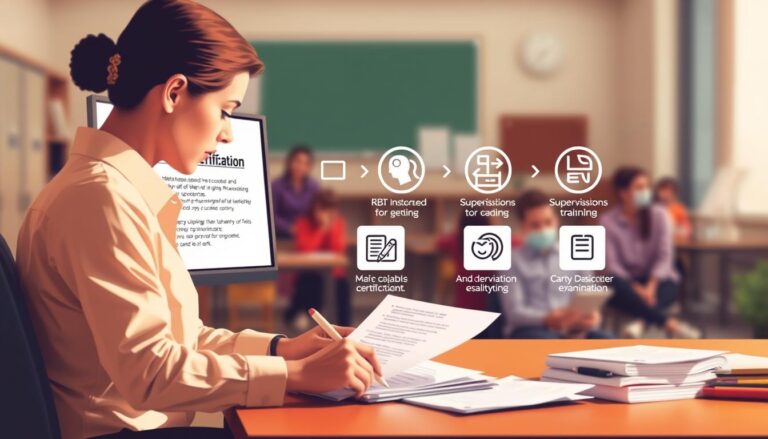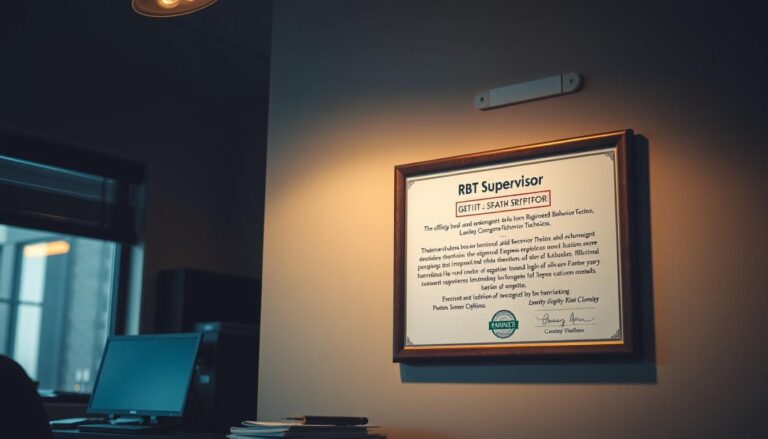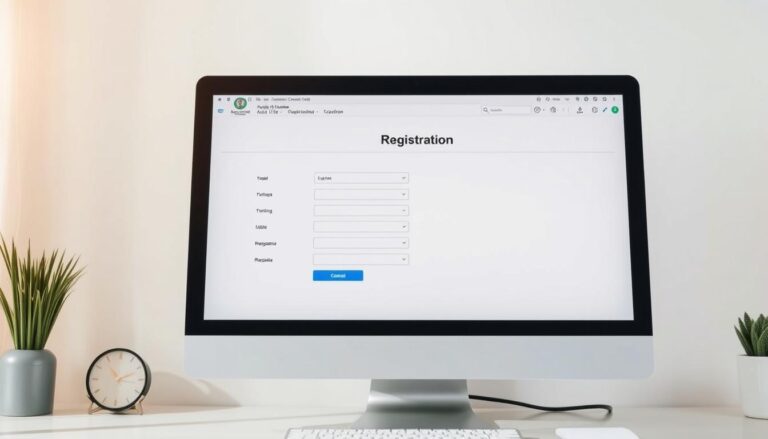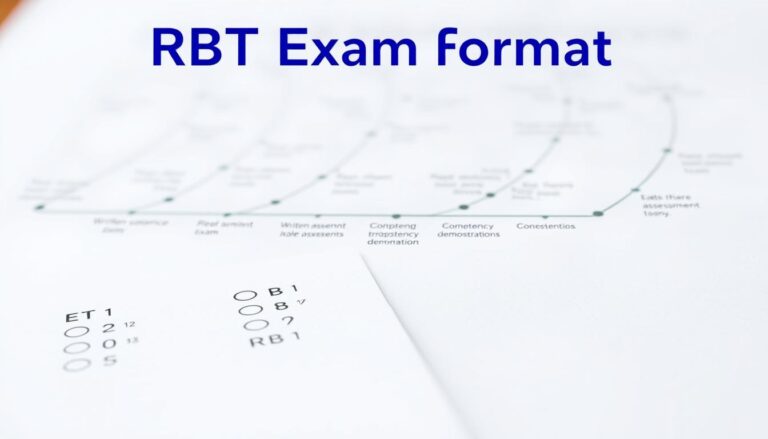Brain-Based RBT Prep: Study Smarter, Not Harder!
Getting ready for the Registered Behavior Technician (RBT) certification can be tough. But, brain-based strategies offer a new way to learn that makes studying easier and more effective.
Science shows our brains are incredibly powerful. When we learn how to use them right, we can do much better. Tips for the RBT exam based on brain science can really help you remember and understand more.
Old ways of studying can make you tired and upset. But, using brain-based learning, you can make studying fun and useful. It’s like growing your skills in a smart way.
This guide will show you top methods to use your brain better. You’ll see how to make your RBT prep easier and more successful. We’ll talk about how to use your brain’s natural learning ways.
Are you ready to change how you study for RBT? Let’s explore new strategies that will make learning easier and help you pass your certification.
Understanding the RBT Certification Journey
Starting your journey to become a Registered Behavior Technician (RBT) needs careful planning. You must understand the certification process well. Getting ready for the RBT exam requires a lot of knowledge and strategy.
The path to RBT certification has many important steps. Those aiming for this title must follow rules set by the Behavior Analyst Certification Board (BACB).
Key Requirements for RBT Certification
To get RBT certified, you need to meet certain basic requirements:
- Be at least 18 years old
- Have a high school diploma or its equivalent
- Finish a 40-hour training program
- Pass a background check
- Go through a competency test with a qualified supervisor
Timeline and Exam Structure Overview
To do well on the RBT exam, know its structure. Getting certified usually takes 2-3 months after training. The exam has 85 questions, with 75 scored and 10 pilot questions.
| Exam Component | Details |
|---|---|
| Duration | 1 hour and 15 minutes |
| Passing Score | 80% (68 out of 85 questions) |
| Exam Format | Computer-based test |
What to Expect During the Testing Process
The RBT exam tests your knowledge in applied behavior analysis. Candidates should expect questions on:
- Measurement and documentation
- Behavior reduction
- Skill acquisition
- Professional conduct and ethics
To pass, be confident, well-prepared, and know the key skills needed for behavior technician roles.
Brain-Based Strategies for RBT Preparation
Getting ready for the Registered Behavior Technician (RBT) certification is more than just studying. Using brain-based strategies can really help. These methods are backed by science and help you learn better and remember more.
Knowing how your brain handles information can make studying more effective. Good RBT test strategies use different parts of your brain to learn and remember better.
- Activate neural pathways through active learning techniques
- Leverage neuroplasticity for deeper concept understanding
- Create meaningful connections between new and existing knowledge
Key brain-based learning principles include:
- Spaced Repetition: Spread out your study sessions to keep memory strong
- Active Recall: Test yourself often to make connections in your brain
- Elaborative Rehearsal: Link new info to what you already know
| Brain-Based Strategy | Learning Impact | RBT Exam Relevance |
|---|---|---|
| Spaced Repetition | Boosts long-term memory | Helps you understand behavior analysis better |
| Active Recall | Strengthen brain connections | Boosts your test scores and confidence |
| Visualization Techniques | Uses many brain areas | Makes complex behavioral strategies easier to grasp |
Using these brain-based strategies for RBT prep can make learning easier. It can also lower stress and make you feel more ready for the exam.
Leveraging Memory Techniques for RBT Content Mastery
Mastering RBT content is more than just memorizing. It’s about using smart learning methods. These methods make studying easier and more effective.
The brain learns best when it’s challenged in a structured way. Using special memory techniques can boost your learning and help you remember more.
Spaced Repetition Methods
Spaced repetition is a key study technique for RBT. It involves reviewing material at the right times. This helps you learn and remember better.
- Reviewing materials at gradually increasing time intervals
- Focusing on challenging concepts more frequently
- Creating personalized study schedules
Active Recall Strategies
Active recall turns reading into active learning. Here’s how to apply it to RBT content:
- Use flashcards with specific behavioral intervention scenarios
- Practice self-quizzing on key ABA principles
- Explain complex concepts without referencing notes
Mind Mapping for Complex Concepts
Visual learners can use mind mapping for complex topics. Creating visual connections helps you understand complex ideas better. It works by:
- Connecting related behavioral concepts
- Visualizing intervention hierarchies
- Identifying relationships between different learning domains
By using these memory techniques, RBT candidates can grasp important content deeply. This turns study time into valuable learning experiences.
Creating an Effective RBT Study Schedule
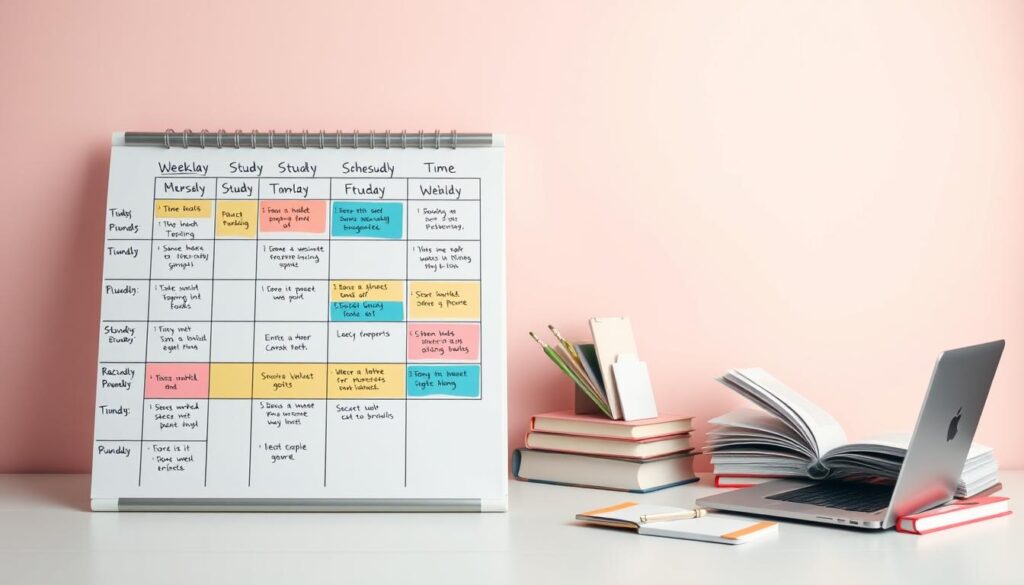
Creating a good study schedule is key for passing the RBT exam. Start by figuring out how you learn best and how much time you have. Making a study plan that fits you helps break down big topics into smaller, easier pieces.
First, check what you already know and how much time you can study. It’s smart to make a study plan that fits your work and personal life. Divide your study materials into clear areas to focus on:
- Behavior reduction strategies
- Data collection techniques
- Ethical considerations
- Professional conduct guidelines
Good planning is more than just setting study times. Here are some tips:
- Time blocking: Set aside hours for studying
- Switch topics to keep your interest
- Take short breaks to avoid burnout
- Check and change your plan every week
Technology can help a lot in getting ready for the RBT exam. Use digital calendars, study apps, and reminders to stay on track. A good study plan is your guide to getting certified.
Optimizing Your Learning Environment
Getting ready for the RBT certification exam is more than just studying. It’s also about setting up the right learning space. Your study area greatly affects how well you learn and remember during exam prep.
- Find a quiet spot with few distractions
- Make sure the lighting is good to avoid eye strain
- Keep the room at a comfortable temperature
- Use furniture that supports long study times
Crafting Your Ideal Study Space
Your study area affects how well you think. Natural light and a tidy, organized space can really help you focus. Try to study near a window and keep your stuff organized.
Digital vs. Physical Study Materials
Choosing between digital and physical study materials is important for RBT exam prep. Each has its own benefits:
| Digital Materials | Physical Materials |
|---|---|
| Easy to carry and access | Good for hands-on learning |
| Great for searching and highlighting | No battery worries |
| Interactive practice tests | Less screen time |
Managing Environmental Factors
Use background noise or soft music to help you concentrate. Good RBT test strategies include setting up a consistent study area. This tells your brain it’s time to focus and learn.
Success in RBT exam prep comes from finding a study setup that fits you. Try different environments and methods to find what works best for you.
Essential RBT Concepts and Their Applications
To master RBT content, you need to grasp core behavioral analysis principles. Aspiring Registered Behavior Technicians (RBTs) must learn key concepts. These concepts are the base of applied behavior analysis (ABA) therapy.
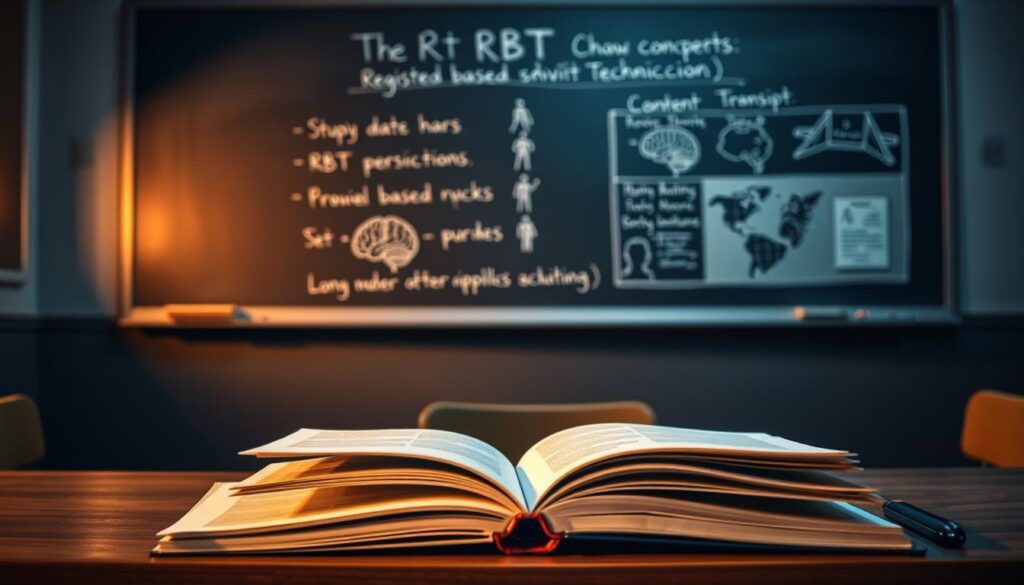
- Behavior Measurement and Data Collection
- Behavior Reduction Strategies
- Skill Acquisition Procedures
- Ethical Considerations in ABA Therapy
Now, let’s dive into the essential concepts RBT candidates must know:
| Concept | Key Application |
|---|---|
| Positive Reinforcement | Encouraging desired behaviors through rewards and praise |
| Antecedent Strategies | Modifying environmental conditions before target behavior occurs |
| Data Collection Methods | Tracking behavior frequency, duration, and intensity |
Learning RBT techniques needs a hands-on approach. It’s not just about knowing the theory. It’s about applying it in real life. You should aim to turn book knowledge into real help for people.
Getting ready to be an RBT is more than just remembering terms. It’s about really understanding how to help people with developmental challenges. You need to know how to use what you learn to make a difference.
Practical Exercise Strategies for Skill Development
Getting good at practical skills is key for passing the RBT exam. Good RBT test strategies include more than just studying. They focus on interactive learning that mimics real therapy situations. This hands-on approach helps future Registered Behavior Technicians apply what they’ve learned in real life.
Getting the RBT certification is more than just remembering what you read. Practical exercises are essential. They help you improve your skills and feel more confident.
Role-Playing Scenarios
Role-playing is a top tip for acing the RBT exam. It lets you practice:
- Communication skills
- Handling tough client behaviors
- Professional interactions
- Emotional intelligence
Case Study Analysis
Looking at real behavioral cases is another great way to learn. Good RBT test strategies include:
- Looking at different client scenarios
- Finding the best intervention strategies
- Thinking about possible challenges
- Measuring how well things work
Hands-on Practice Sessions
Practical experience is vital for RBT skills. You can get hands-on by:
| Practice Method | Learning Benefit |
|---|---|
| Supervised Fieldwork | Direct client interaction experience |
| Volunteer Opportunities | Real-world behavioral intervention exposure |
| Mentorship Programs | Professional skill guidance |
Remember, successful RBT certification combines theoretical knowledge with practical skill development.
Managing Test Anxiety and Stress
Getting ready for the RBT certification exam can be very stressful. It’s important to know how to handle these feelings to do well. Many people feel anxious during tests, which can make them doubt their abilities.
Learning to manage stress can change how you study for the RBT exam. It’s not just about knowing the material. Being mentally prepared is just as key as knowing the facts.
- Practice deep breathing techniques to calm nerves
- Develop a consistent sleep schedule
- Implement regular physical exercise
- Use positive visualization methods
Changing how you think can help a lot with test anxiety. Turn negative thoughts into positive ones. For example, instead of thinking “I might fail,” say to yourself “I am ready and can do it.”
What you eat and how you take care of your body also affects your mind. Eat well, drink plenty of water, and get enough sleep. Make a plan to manage your stress that includes relaxation and self-care.
- Meditation
- Progressive muscle relaxation
- Mindfulness exercises
Learning to handle test anxiety takes time and effort. Be kind to yourself as you work on your RBT exam study tips.
Technology Tools and Resources for RBT Study
Using technology can really help with your RBT study. Digital tools make learning fun, flexible, and effective. We’ll look at the latest tools to help you get certified.
Today’s tech gives RBT students powerful tools. These tools change how we learn. Now, studying for the RBT exam includes digital platforms and apps made just for behavioral therapy.
Digital Flashcard Systems
Digital flashcards change how we study. They use spaced repetition and active recall. These tools help you:
- Make study sets for RBT topics
- See how you’re doing with detailed stats
- Study on any device
Online Study Platforms
Online platforms have everything you need for RBT prep. They offer:
- Interactive questions
- Deep content reviews
- Mock exams to test your skills
- Tracking and study tips
Mobile Learning Apps
Mobile apps let you study anytime. Bite-sized learning modules fit into your busy schedule. Study during commutes or breaks.
Choose tech tools that fit your learning style. Make sure they help your study plan. The goal is to use these tools to support your learning, not replace it.
Common Pitfalls to Avoid During RBT Preparation

Getting ready for the RBT certification exam needs careful planning. Knowing the common study hurdles is key. Many future RBTs face challenges that can stop them from passing if not tackled early.
It’s important to know the common mistakes when getting ready for RBT certification. Students often find it hard in several areas that can affect their test score:
- Procrastination and not studying regularly
- Too much focus on passive learning
- Ignoring important content
- Bad time management
- Not enough practice with real-life scenarios
Success in the RBT exam starts with spotting these obstacles. A well-planned study plan helps candidates beat common challenges.
| Pitfall | Impact | Solution Strategy |
|---|---|---|
| Inconsistent Studying | Knowledge Gaps | Create a consistent daily study schedule |
| Passive Learning | Limited Retention | Implement active recall and practice tests |
| Time Management | Exam Pressure | Use timed practice sessions |
When getting ready for the RBT certification exam, focus on balanced learning strategies. Know your strengths and weaknesses in studying. Then, create a study plan that covers your weak spots.
Getting help from professionals can really help. Look into joining study groups, finding mentors, or working with experienced RBTs. They can guide you through the tough parts of preparation.
Building a Support Network for Success
Getting ready for the RBT exam can be tough, but you don’t have to face it alone. It’s key to build a strong support network for RBT exam prep. Good connections can give you motivation, insights, and useful resources while you study.
Here are some ways to build your support network:
- Form study groups with other RBT candidates
- Connect with experienced RBTs and BCBAs
- Join online professional communities
- Talk about your study goals with family and friends
Many RBT exam study tips highlight the value of learning together. Study groups offer many benefits, like shared knowledge, accountability, and chances to practice tough skills. Online forums can link you with others facing similar challenges.
Mentorship is also very important for RBT test strategies. Look for mentors who have passed the certification. They can share tips, study advice, and support during your prep.
Your support network isn’t just about work connections. Tell your family and friends about your study plans. This way, they know what you’re working towards and can offer emotional support. A supportive home can make studying less stressful and more enjoyable.
- Plan regular study group meetings
- Join professional social media groups
- Go to virtual workshops and webinars
- Share study materials and resources
Building a support network is more than just getting help. It’s about creating a space that helps you grow professionally and succeed in getting your RBT certification.
Mock Exam Strategies and Practice Tests
Getting ready for the RBT certification exam needs smart practice and planning. Mock exams are key to mastering RBT exam prep. They mimic the real test setting.
Learning to ace the RBT exam starts with knowing how to tackle practice tests. These tests do more than just review content. They also sharpen your test-taking skills and boost your confidence.
Timing and Pacing Techniques
Managing your time well is vital for the exam. Here are some tips:
- Set a time limit for each question section
- Practice finishing mock exams within the real test’s time frame
- Use a timer during practice to mimic the real exam atmosphere
Question Analysis Methods
Having a method for analyzing practice test questions can boost your accuracy and speed:
- Read each question carefully
- Spot important terms
- Rule out obviously wrong answers
- Choose the best answer
Performance Review Strategies
After a mock exam, follow a detailed review process:
| Review Area | Action Steps |
|---|---|
| Incorrect Answers | Find out why you made mistakes |
| Time Management | Spot areas where you can improve speed |
| Weak Content Areas | Make a study plan for those areas |
Remember, mock exams are chances to learn. Each test brings you closer to RBT certification success.
Conclusion
Getting ready for the Registered Behavior Technician (RBT) certification is more than just memorizing. Using brain-based strategies makes studying more fun and effective. Knowing how our brain learns is key to mastering RBT content well.
This guide covers many techniques, from learning methods to practical skills. Spaced repetition, active recall, and practice sessions are powerful tools. They match how our brain learns, making complex ideas easier to remember.
Your RBT certification is just the start of a rewarding career. It’s not just about passing a test. It’s about building skills that will help you throughout your career. Stay focused, keep learning, and believe in your growth.
Every study session brings you closer to your goal. With hard work, smart preparation, and a scientific learning approach, you’ll do great. You’ll become a skilled, caring behavioral technician, ready to make a big difference in applied behavior analysis.
